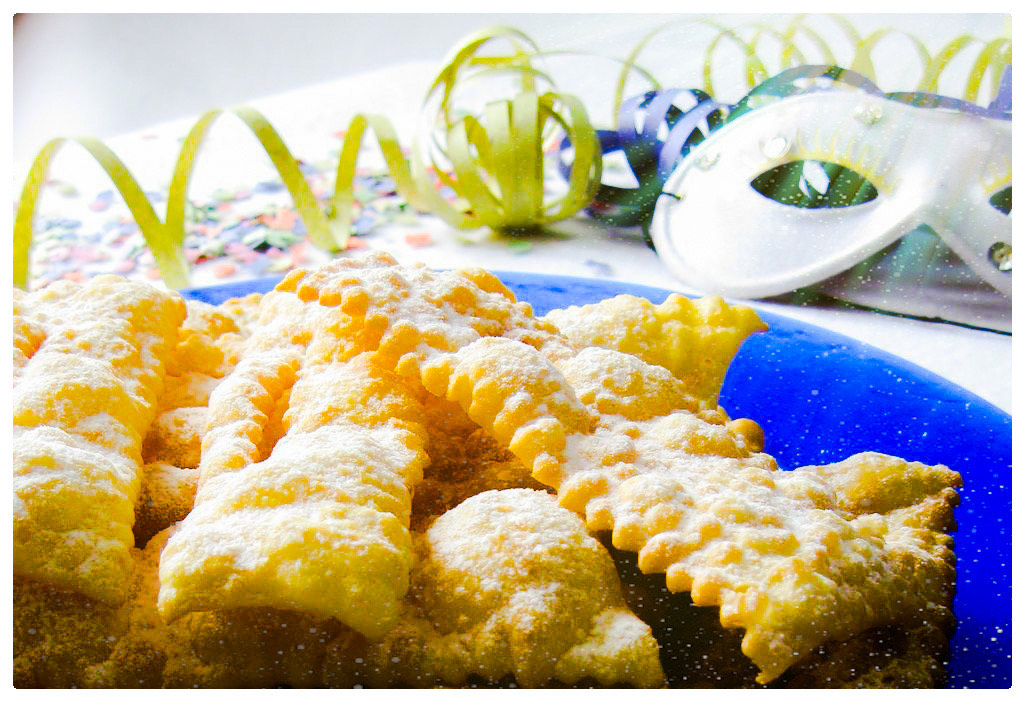
Chiacchiere, bugie, cenci, sfrappole, crostoli, frappe, lattughe, risole: these are just some of the names that vary from region to region of the most classic of Carnival sweets that in Venice is called galani! Light, sweet, crunchy and fragrant, inevitable and caloric friends of carnival celebrations.
The dessert has a very ancient ancestor in the frictilia of ancient Rome: in Romans, on the occasion of Saturnalia, today's Carnival, they used to prepare a dough very similar to lasagne sheets, then fry them in abundant pork fat and then sweeten them with honey. It was not a light preparation at all, but it followed the lean period of the Lenten days, so it was justified. But the Romans dominated the world and so the dessert reached every point of the Empire: this is the reason why every region of Italy and many countries in Europe have their own version.
In Venice the frictilia took the name of galani, because the shape and the very thin weave made them similar to the ribbons with which the girls loved to adorn their necks, and that in the Venetian dialect is called just galan.
But in the innermost part of the lagoon, that of the mainland, you may have heard them called crostoli: it is the same preparation but the dough is left a little thicker and becomes less crumbly and crunchy. Equally delicious!
Let's do the venetian galani: recipe and procedure
It's not at all difficult to prepare the Galans. In fact, in view of Carnival, it's almost a must!
Here I bring you back the original recipe, granted to me by one of the most famous Venetian chefs. Try them, they are delicious!
Ingredients:
- 500 grams 00 flour (plus another 100 grams to work the dough on the pastry board).
- 5 egg yolks at room temperature
- 110 grams of caster sugar
- A small glass of grappa or marsala (it will colour the dough a little bit).
- A glass of prosecco or white wine
- A bag of vanilla yeast
- A pinch of fine salt
- 25 grams of butter ointment
- The grated rind of a lemon (untreated)
- 50 grams of icing sugar
Preparation:
Put the flour, caster sugar and baking powder on the pastry board (or in a small planetarium). Start mixing the powders and then add the soft butter. Let it "sand" (i.e. let the butter incorporate into the flour giving rise to a granular compound similar to wet sand). If you choose to knead by hand, knead the butter for a short time and only with your fingertips so that it doesn't get too hot.
Then add the yolks a little at a time so that the mixture absorbs them well. Then add the grappa (or marsala), the pinch of salt and the grated lemon rind. Knead the mixture until it is homogeneous, then add the prosecco (or the wine) until you obtain a smooth and slightly elastic mass that is easily detached from the edge of the planetaria (or from the surface of the pastry board). Form a ball and wrap it in transparent film to let it rest in the fridge for at least a couple of hours.
Once the time has passed, take the dough and start working it on the pastry board: cut it into several parts and roll each one out first with a rolling pin and then with the help of a sheeter into many very thin sheets (size 1 or 2 at most). If you want you can do all the work with a rolling pin, but it will take a lot of elbow grease!
Cut the sheets obtained by obtaining lozenges of about ten centimeters per side, using a festooned pasta cutter. Now let's start frying: place a high-sided pot on the fire and heat plenty of peanut oil at 160°. Dip your galani and let them fry until golden. Dry them on absorbent paper and dust them with a lot of icing sugar.
Your galani are ready to be enjoyed: you can accompany them with a classic cup of hot chocolate, but also with chantilly cream or eggnog.
Happy Carnival to everyone ;-)










Lascia un commento